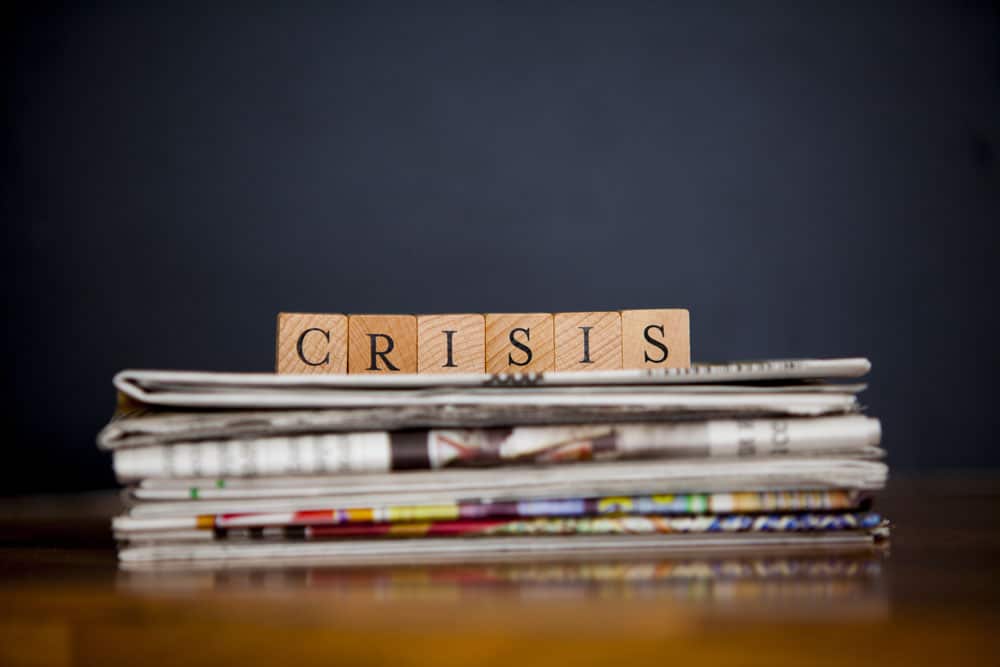It’s easy to tell when a company is caught flat-footed in the face of a public relations crisis. Often, their response is characterized by tone-deaf responses, bland and non-committal statements or, even worse, no response at all.
Having a plan in place means that your organization is far better equipped to handle whatever bumps and bruises your brand takes in today’s communications landscape.
By taking the time to develop communications procedures and create a well-trained and adaptable team, you can handle issues quickly before they have the power to cause lasting damage to your brand.
Not sure where to start? Our 10-step plan below can ensure that you are covered:
1. Create a crisis communications team.
Before you create your plan, know who is going to implement it. Designate an individual responsible for every task. Don’t fall into the trap of making any duty a general one: because, when it’s everyone’s responsibility, it’s no one’s.
Your crisis team should have multiple members. Each task should have alternates, as well. This way, if something happens at a time when specific team members are not available to handle their designated tasks, there is someone ready and able to provide a fast response.
Don’t have someone with adequate training and experience in-house? A crisis communications consultant can provide the guidance that key players will need.
2. Assess your vulnerabilities.
Before a crisis ever strikes, have a brainstorming meeting to anticipate what sorts of crises are most likely. Times of transition are often the most likely to cause public relations issues. For instance, if you need to change packaging, pricing, or an ingredient in a well-loved product, there’s a good chance that someone will complain. Quarterly earnings reports that show gains that are smaller than expected are often another source of PR problems. Any organization that deals with customer data take on the risks associated with a data breach.
Make a list of these and other potential public relations problems that you might someday face. Prioritize the list based on how likely any one scenario is and how serious it could be for your company. Once you have arrived at the most pressing issues, begin formulating possible responses.
3. Create a crisis communications plan.
How will you react when a crisis occurs? While you can’t plan for every eventuality, you can have a general idea of what you will say and what you will do to alleviate problems when they occur.
This plan should include contact information for every player, their roles and a collection of boilerplate messages that are ready to go out on the fly. The more you have planned in advance, the quicker you will be able to respond.
4. Train spokespeople.
No one is born knowing what to say when unhappy customers, social media mavens or members of the press come calling. When you haven’t learned how to respond, it is too easy to respond in a way that adds fuel to the fire instead of quenching it.
A crisis communications consultant can help get members of your team ready to respond in the most productive way when a crisis occurs. They can help you learn what pitfalls to avoid and what words are most likely to smooth feathers and make people feel more positively toward your brand.
5. Template out your initial messaging.
While the ability to think on your feet is valuable, having something in hand for a crisis can be an immeasurable help. Think of what kinds of communications might be needed in a crisis and create them before they become necessary.
The first thing you should have is a selection of holding statements that can be used for immediate responses while your team regroups. These can allow you to respond appropriately and quickly; without a quick reply at the ready, people may deem your brand unresponsive. A selection of messages can include sentiments like:
- “Our team is aware of the issue and is in the process of collecting more information. We will supply further information as it becomes available.”
- “Our organization takes the safety of the public very seriously. We have implemented our crisis response plan and are working to resolve the issue.”
- “We were dismayed to read about yesterday’s incident. Our organization places the highest value on diversity and inclusion; we are looking into the incident and will take whatever actions are necessary to resolve this.”
6. Establish a monitoring and notification system.
The best and most decisive reactions are possible when your organization is not taken by surprise. Having an ear to the ground at all time through tools, or even a reputation command center, can allow you to capture the first whisperings of a public relations problem before it gets out of hand.
Social listening is imperative for today’s organizations. By watching what is being said about your organization, you can catch negative sentiment before it becomes today’s trending hashtag.
In Episode #2 of the Managing Uncertainty Podcast, two experts from Bryghtpath discuss the need for companies to have a “radar screen” through a command center or social media monitoring center that helps fulfill this need.
You should also have designated members of your team who interact with members of the press. Most outlets will call to get a statement before running a story that could be negative for your brand. By having someone designated to take these calls, you can provide answers quickly to ensure that your brand’s side of the story is told.
7. Identify stakeholders.
Who do you need to respond to when a negative event occurs? Inadvertently ignoring any stakeholders can lead to anxiety and a loss of trust.
In most cases, employees are among your top stakeholders. The people who make your company a success need to be able to have trust and confidence in your organization. Customers, shareholders, and members of your social media audience are all people you will need to think about, as well. Ensuring that all of these groups receive the message you want them to hear is important. In the end, they will be communicating with others about your brand; by sharing what you want to broadcast to others, you can make them advocates instead of adversaries.
8. Assess your crisis.
As soon as it is possible, begin collecting information about the public relations crisis. What was the cause of the issue? What negative outcomes are you currently experiencing? Who is being affected? What is being done to remedy the problem?
Assemble the information that you have and get it to the people who are most likely to interface with the press and the public. The more that they understand, the more helpful they will be. Try to be as transparent as possible without oversharing. Give direct answers, but do not give more detail than is requested. You never have to walk back statements that you didn’t make in the first place!
9. Reach out and communicate.
Responding quickly is essential. The sooner you can get your side of the story out there, the less time there is for people to speculate. However, communicating quickly also needs to mean communicating correctly. Do not send out messages that are defensive or dismissive of stakeholders’ concerns.
Instead, have a few specific prepared statements that can be delivered to the right outlets. These should provide the detail needed to assuage fears and show your commitment to correcting the current issue. Make sure that the press, customers, and other stakeholders know who to contact if they have further questions or concerns.
10. Analyze what happened.
Your job isn’t done when the crisis has passed. Now is the time to learn from what happened so that you can handle the next situation more smoothly than the last. Crisis management is an ongoing task and each crisis is a chance to learn how to avoid the next one. Doing a formal analysis of what went wrong, where you reacted well, and what areas could use improvement is a vital, if painful, process.
The actions that you take before, during, and after a crisis can all have a significant effect on your brand’s reputation over time. Public relations crises can’t be entirely prevented. However, they can be managed in a way that will allow your brand to continue the positive relationships that have built your success. By having a strong and flexible plan in place, you can keep brand sentiment positive and roll with whatever punches the modern world throws your way.
Want to work with us or learn more about Crisis Communications?
- Our proprietary Resiliency Diagnosis process is the perfect way to advance your program. Our thorough standards-based review culminates in a full report, maturity model scoring, and a clear set of recommendations for improvement.
- Our Crisis Communications services help you rapidly grow and mature your program to ensure your organization is prepared for the storms that lie ahead.
- Our free Crisis Communications 101 Introductory Course may help you with an introduction to the world of crisis communications – and help prepare your organization for your next disruption.
- Learn about our Free Resources, including articles, a resource library, white papers, reports, free introductory courses, webinars, and more.
- Set up an initial call with us to chat further about how we might be able to work together.


 Workplace Violence in 2018: A look at 7 incidents from the first half of the year
Workplace Violence in 2018: A look at 7 incidents from the first half of the year